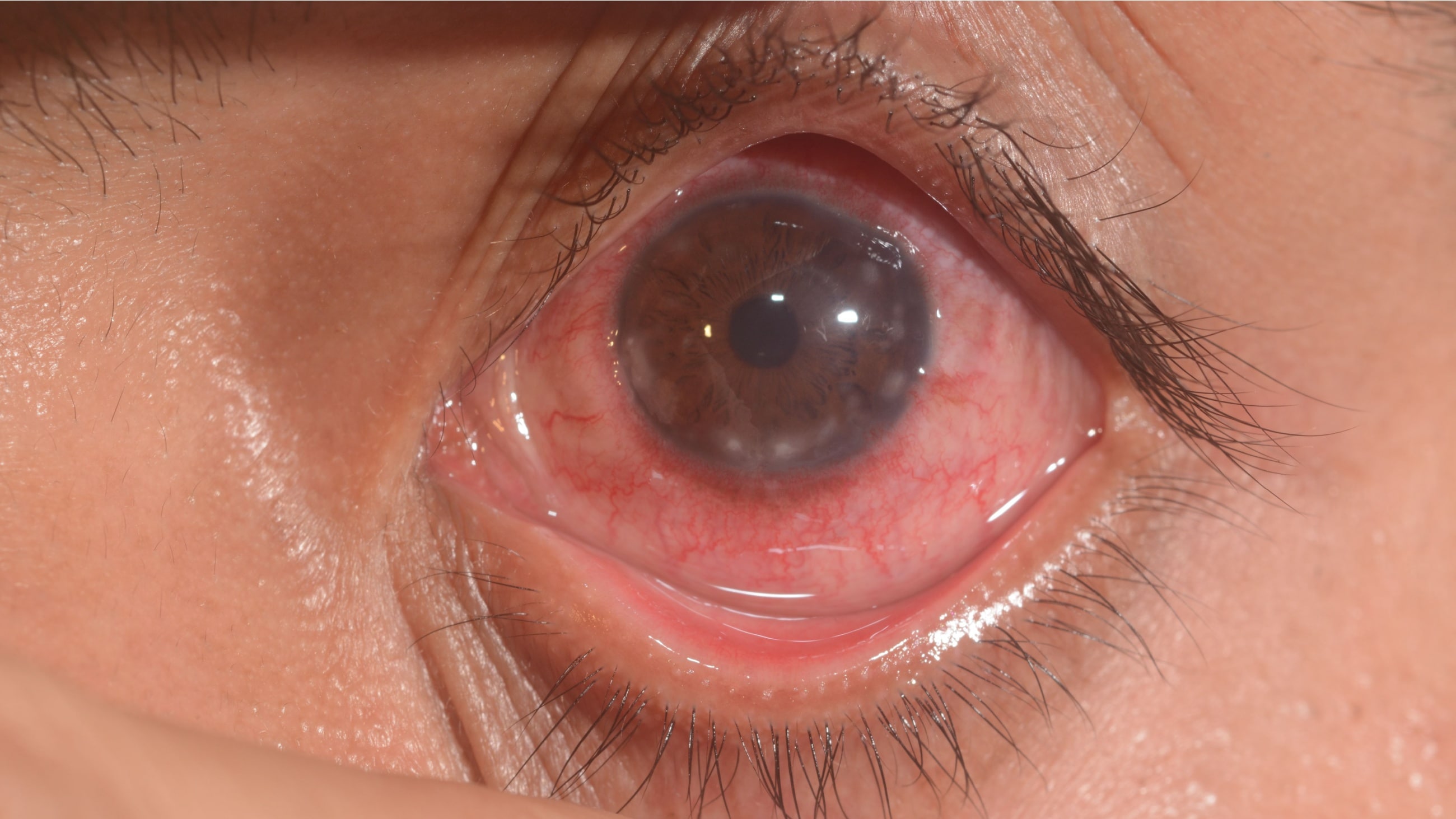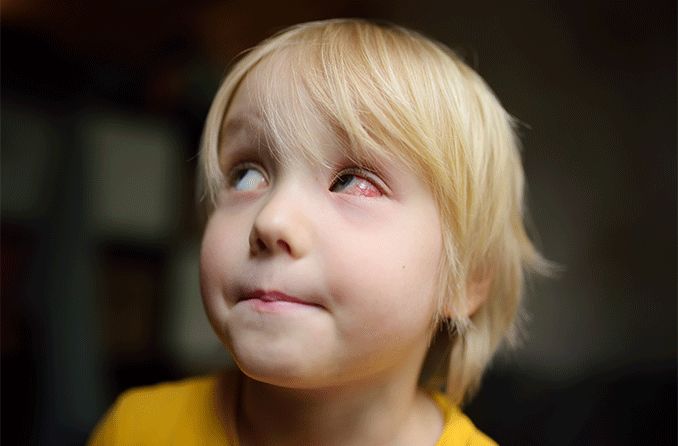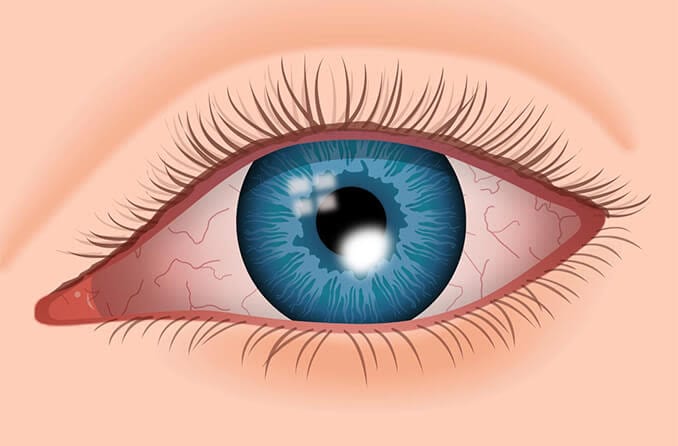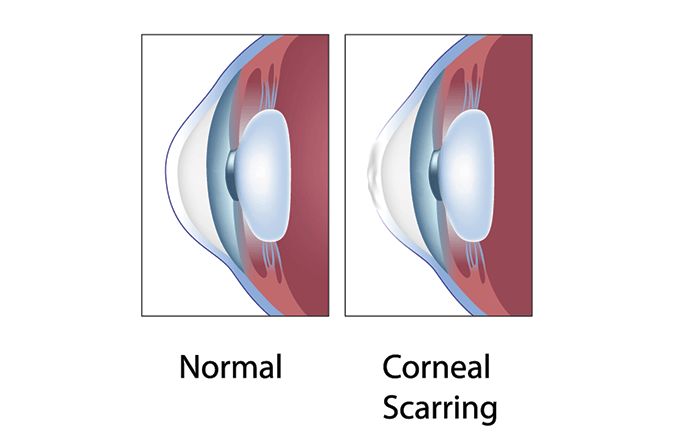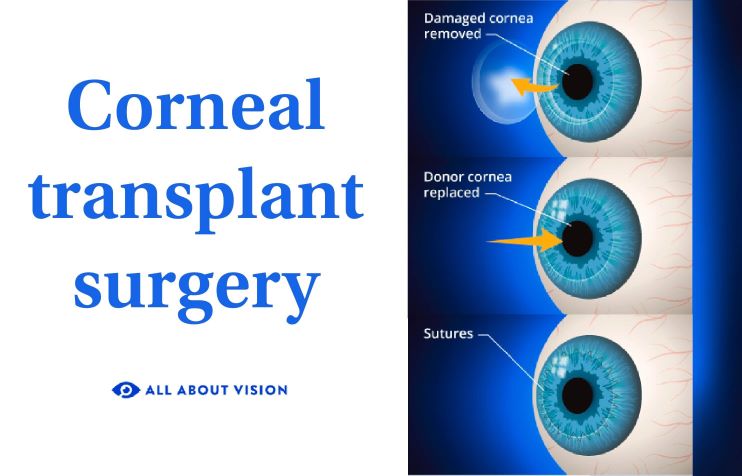What is atopic keratoconjunctivitis?
Atopic keratoconjunctivitis (AKC) is a genetic condition that causes severe inflammation and itching in both eyes. It’s caused by an overreaction of the immune system to environmental triggers and is often associated with atopic dermatitis. Symptoms can worsen in the winter but last all year.
AKC is an overall rare condition. The prevalence is estimated to be between 1 and 5 people per 10,000. Unlike seasonal eye allergies, AKC does not come and go depending on the time of year. Instead, indoor allergens are often common triggers. These include:
- Dust mites
- Pet dander
- Smoke
- Certain food chemicals
Early diagnosis and treatment are essential for managing this severe condition. If AKC is not properly controlled, it can cause progressive and permanent vision loss. Treatment focuses on minimizing flare-ups and recurrence. Symptoms — such as chronic itching — must also be managed because they can lead to eye rubbing. This rubbing can cause permanent damage to the eyes, particularly the corneas.
How are atopic dermatitis and atopic keratoconjunctivitis related?
Atopic dermatitis (AD) is the most common type of eczema. Eczema is a group of chronic skin conditions that cause patches of inflammation, itching and rashes. The terms eczema and atopic dermatitis are often used interchangeably.
Globally, atopic dermatitis impacts:
- 15% to 20% of children
- 1% to 3% of adults
Atopic means your immune system reacts too strongly to common triggers. It’s an inherited condition. The triggers vary, but they commonly include pollen, pets and foods.
Common atopic reactions include:
- Breathing problems, such as asthma
- Skin rashes, such as eczema
- Itching
- Swelling
- Stuffy, runny nose
- Nausea and/or vomiting
While atopic dermatitis affects the skin, atopic keratoconjunctivitis affects the cornea and conjunctiva. The cornea is the clear, dome-shaped tissue at the front of the eye. The conjunctiva is the clear membrane covering the white part of the eyes and the inner eyelids.
Atopic dermatitis usually occurs in childhood. In contrast, atopic keratoconjunctivitis typically affects young and middle-aged adults. About 25% to 40% of people with atopic dermatitis develop atopic keratoconjunctivitis. The severity of the skin condition doesn’t impact whether AKC is likely to develop. Males tend to be affected more often than females.
What are the symptoms of atopic keratoconjunctivitis?
AKC causes chronic inflammation of the eyes and eyelids. While AKC can occur all year-round, symptoms may worsen during the winter. People with atopic keratoconjunctivitis typically have eye symptoms that include:
- Severe itching
- Burning
- Tearing
- Irritation
- A sensation of sand or grit in the eyes
- Redness
- Thick, stringy discharge
AKC also has a noticeable impact on and around the eyelids, which can aid in diagnosis. Eyelid signs include:
- Swollen and red appearance
- A hardened or thickened texture (due to eczema)
- Crusty areas
- Small cracks on the skin
- Darker pigmentation around the eyes, often referred to as "panda eyes"
- Small or large bumps on the inside of the eyelids
How can I tell if my eye irritation is something serious?
If you experience the following symptoms, you should make an appointment with your eye doctor for a comprehensive eye exam:
- Blurred vision
- Light sensitivity
- Eye pain
- Intense chronic eye itching
- Inflamed, hardened eyelids
Prompt and appropriate treatment is essential because if AKC is ignored, it can lead to progressive eye damage and vision loss.
What causes atopic keratoconjunctivitis?
AKC is a genetic condition associated with atopy, which is a tendency toward allergic diseases. The condition flares up when exposed to certain allergens, causing an overreaction from the immune system. This leads to the release of chemicals, such as histamine, that cause symptoms like itching and swelling.
AKC usually occurs in people with eczema or a history of allergies. It is thought to be the eye-related form of atopic dermatitis (AD or eczema). About 95% of AKC cases are connected to AD. People with other allergies, like asthma or allergic rhinitis, are also more likely to develop AKC.
Underlying risk factors
Researchers are finding that people with AKC, especially kids, often have multiple allergies. They may be allergic to foods, pets and more, rather than just one thing. This pattern of reacting to several allergens at the same time suggests that AKC often occurs with other conditions. These can include:
- Atopic dermatitis (the most common form of eczema)
- Asthma
- Allergic rhinitis (sneezing and stuffy, runny nose)
- Food allergies
- Allergies to pollen, pets and dust mites
How is atopic keratoconjunctivitis diagnosed?
A diagnosis of AKC typically begins with a thorough eye examination by an eye doctor. During the exam, they will:
- Ask about the nature and duration of your symptoms, whether they are year-round or seasonal.
- Review your medical history, noting any past diagnoses of atopic dermatitis, asthma or allergic rhinitis.
- Consider family history related to atopic diseases.
The doctor will examine your eyes using a slit lamp or ophthalmoscope. These instruments allow them to examine the eyes’ surface and eyelids for classic signs of AKC. These include:
- Swelling and redness of the conjunctiva
- Bumps called papillae on the lower eyelids
- Thickening of the eyelid margin
- Increased pigmentation (skin darkening) around the eyes
Since AKC involves inflammation, some specialized tests might be ordered to help confirm the diagnosis. For example, scrapings from the cornea may be examined for eosinophils. These are white blood cells involved with inflammation. A blood test may also be recommended to measure serum immunoglobulin E (IgE) levels. These proteins are involved in allergic reactions.
Eye problems that can be mistaken for atopic keratoconjunctivitis
AKC symptoms can resemble those of other eye conditions. Doctors may need to do a differential diagnosis for accurate treatment. Some eye conditions that can have signs or symptoms similar to AKC include:
Vernal keratoconjunctivitis
Vernal keratoconjunctivitis (VKC) is a serious allergic eye condition in children and young adults. It causes similar symptoms to AKC. It has been suggested that vernal keratoconjunctivitis is a childhood form of AKC. The two conditions have some key differences:
- VKC usually goes away by puberty. In contrast, atopic keratoconjunctivitis (AKC) mainly affects adults.
- VKC often gets worse in spring and summer, while AKC is more common in winter.
- AKC is often linked to eczema. Children with VKC might have eczema, but it’s not always the case.
Seasonal allergic conjunctivitis
This is a common allergic reaction to pollen, also known as hay fever. It causes similar symptoms to AKC, including itching and redness, in the eyes. Allergy symptoms typically follow seasonal patterns, improving as the season ends.
Giant papillary conjunctivitis
Giant papillary conjunctivitis (GPC) is caused by irritation from wearing contact lenses. It is often made worse by allergies. It leads to bumps (papillae) in the conjunctiva, similar to AKC. However, stopping contact lens use usually helps GPC improve.
Treatment options for atopic keratoconjunctivitis
Early detection and treatment are essential for treating AKC. Treatment plans vary with each individual. The main goals of therapy are to:
- Control inflammation.
- Reduce symptoms.
- Limit recurrence.
- Prevent long-term eye damage from rubbing.
At-home treatments and lifestyle adjustments
For quick relief from symptoms, applying a cold compress to your eyes can be helpful. Your eye doctor may also recommend wearing cotton gloves at night to prevent you from rubbing your eyes. They may also recommend that you:
- Stay away from allergens that worsen your symptoms.
- Protect your eyes from smoke and dust.
- Avoid eye rubbing, as it can make symptoms worse and cause damage.
- Use saline irrigation or artificial tears.
- Wear glasses instead of contact lenses.
- Wash your hands often to maintain good hygiene.
Medications and prescription treatments
Your doctor will recommend treatments based on the severity of your symptoms and your risk factors. Some individuals may require a combination of different medications for the best results. Certain medicines may be used long-term, while others are only for short-term use.
A step-by-step approach is often utilized. You will typically start with milder treatments and progress to stronger ones if needed. Treatment options include:
- Antihistamine eye drops and mast cell stabilizers – These medications are typically the first-line treatment for managing symptoms. Antihistamine eye drops and mast cell stabilizers help control the body's allergic response. Common prescriptions include olopatadine, lodoxamide and azelastine.
- Corticosteroids – For severe cases and flare-ups, topical corticosteroids can offer quick relief for short-term use. These strong anti-inflammatory drops should be used sparingly and tapered under a doctor’s supervision.
- Steroid-sparing therapy – For hard-to-treat cases or those needing long-term control, steroid-sparing agents may be prescribed. These include cyclosporine and tacrolimus, used as eye drops or ointments.
- Immunotherapy – This type of therapy requires allergy shots that help desensitize the body to allergy triggers. It is recommended when medications do not provide full relief from symptoms.
When surgery may be needed
Surgery is often the last option. It may be necessary when AKC causes corneal injury or other problems, such as eyelid issues or cataracts. Procedures include:
- Keratoplasty – This surgery is a corneal transplant or graft. It may be necessary when AKC leads to severe corneal defects and scars that affect vision.
- Amniotic membrane procedures – These procedures can help heal corneal ulcers or erosions that do not respond to other treatments. The amniotic membrane promotes healing and cuts down inflammation in damaged corneal tissue.
- Cataract surgery – This surgery may be necessary because people with AKC are at a higher risk of developing cataracts.
- Eyelid surgery – Surgery may be needed when AKC causes complications in the eyelids. For example, eyelashes may grow inward or the eyelid may turn in the wrong direction.
Possible complications
If AKC is not treated or treatment is delayed, vision loss may result. Repeated inflammation and eye rubbing may lead to corneal scarring, thinning, erosion and ulcers. Further complications of AKC include:
- Keratoconus – Development of a thinning and cone-shaped cornea, often due to continuous eye rubbing.
- Corneal neovascularization – Abnormal blood vessel growth in the cornea.
- Corneal infections – Increased risk of microbial and herpes infections.
- Glaucoma and cataracts – Conditions that can occur due to long-term use of steroid eye drops.
- Retinal detachment – Peeling away of the tissue at the back of the eye (the retina).
Living with atopic keratoconjunctivitis
Regular checkups are key to managing AKC. They help your doctor monitor your condition and make adjustments to your treatment. Consistently taking your medications is important for controlling symptoms. Avoiding triggers can also reduce your risk of flare-ups.
Contact your eye doctor promptly if you notice changes in your vision, increased pain or worsening discharge. Living with AKC requires a long-term commitment to prioritizing your eye health. Although it is a chronic condition, most people can maintain good vision and quality of life with proper treatment.

